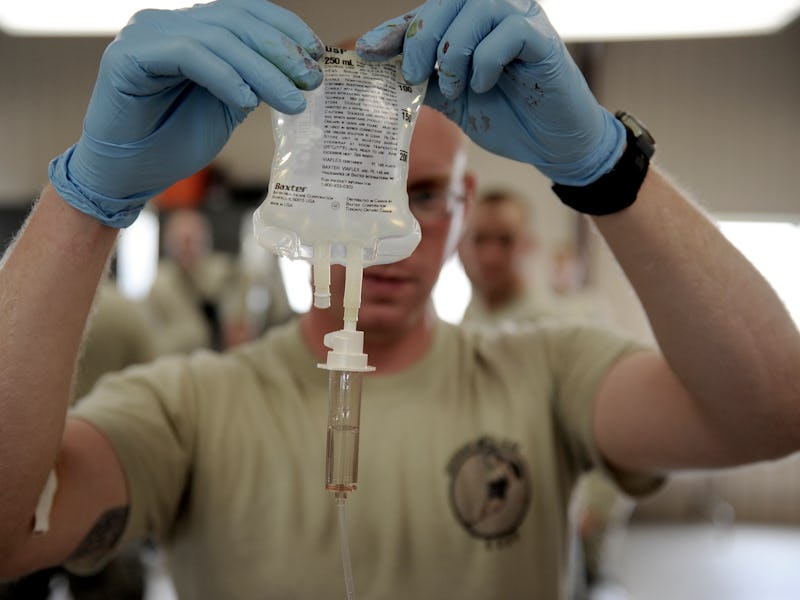The fifth season of the Netflix original Orange is the New Black begins where season 4 left off: Daya is holding a gun pointed directly at corrections officer Humphrey. Screaming inmates egg Daya on, telling her to shoot him.
Caution: Spoilers for season 5 of Orange is the New Black ahead.
After taking a moment to think, she shoots Humphrey in the right inner thigh. Humphrey is taken to the prison medical center, where he wakes up between two inmates, Suzanne “Crazy Eyes” and Maureen, who are plotting how to kill him once and for all.
Their weapon of choice? Bubbles.
Maureen blows air bubbles into Humphrey’s IV bag, and soon he begins slurring his words. Next, he’s shaking in his bed because the air bubbles in his veins (IV is short for intravenous, after all) have just caused a stroke. The left side of his face droops, then he slips into a coma for two days and ultimately dies.
Doctors call blood vessel blockage caused by bubbles an air embolism. While they’re rare, caused mostly by errors in surgical procedures, air embolisms can cause a stroke — the death of brain cells that occurs when a region doesn’t get enough oxygen. The air bubbles act like blood clots and stop oxygenated blood from flowing to the brain, which causes the cells around the clot to die. The functions controlled by the dying area of the brain quickly begin to fail; in Humphrey’s case, the brain area involved in controlling his facial muscles takes the biggest hit.
Corrections Officer Humphrey Suffers From a Stroke Caused by an Air Embolism in Season 5 of OITNB
Strokes from air embolisms sometimes occur when there are issues with catheters in the vein, like those used for IV drips in hospitals. In one case published in Critical Care Medicine in 2000, doctors from the University of Erlangen-Nuremberg reported a 72-year-old man displayed stroke symptoms — speech issues and facial movements — after his catheter was accidentally disconnected. When they performed a CT scan, his doctors saw that air bubbles had reached his brain.
While there are ways to treat air embolism, such as cornering the air bubbles in the body and sucking them out with syringes, prevention is key. Even though the doctors were able to diagnose and treat the patient, he still suffered neurological issues. He was still unable to speak or move three months after the air embolism.
Still, despite his gruesome death, Humphrey’s fate could have been a lot worse. While he ultimately died from an air embolism in his veins, he would have died faster if they’d occurred in his arteries — the blood vessels that carry blood that’s just been pumped from the heart.
According to trauma surgeons at Oregon Health and Science University, air embolisms in the arteries are fatal; their article, published in the International Journal of Critical Illness and Injury Science in 2013, explains that because the arteries move oxygenated blood faster than veins do, arterial bubbles are more dangerous. While venous air embolisms are caused most often by surgical mistakes, arterial bubbles are most often caused by decompression sickness (which occurs when scuba divers rise to the surface of the water too fast), by ruptured lungs, or when they’re intentionally introduced.
